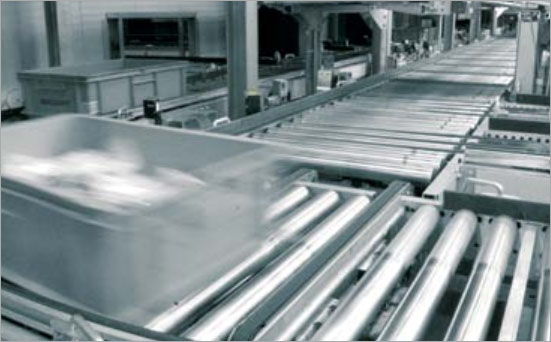 Ultra-High Frequency (UHF) RFID is quickly becoming the go-to identification system for flexible manufacturing lines around the world. While it was once considered to be a system designed primarily for distribution centers and retail stores, UHF technology has evolved to meet the rigors of the manufacturing environment.
Ultra-High Frequency (UHF) RFID is quickly becoming the go-to identification system for flexible manufacturing lines around the world. While it was once considered to be a system designed primarily for distribution centers and retail stores, UHF technology has evolved to meet the rigors of the manufacturing environment.
Not long ago I was in a discussion with one of my customers who had been using RFID for almost 25 years. He was caught in a tough spot because he had an application which required reading tags from as little as six inches away to as far as two feet away. The HF system he had could easily meet his needs for the six inch read range, but reading at two feet away limited him to using UHF. When I explained that, his bewildered look indicated to me he was reluctant to consider UHF as a real option. He went on to explain that about ten years prior he conducted tests in his plant with UHF and found a host of limitations with the technology. His main concern was how the operators’ two-way radios interfered with the UHF operating frequency of 902-928MHz. Having heard this from other manufacturing organizations who were early adopters I knew right away that he wasn’t aware of how the technology has evolved over the last decade.
Frequency hopping has pretty much eliminated interference with other radio signals. In addition to overcoming radio interference, being able to read and write to tags which are mounted on or near metal and liquids has become a reality with recent advancements. These improvements have led to more flexible read ranges which are a requirement in today’s flexible manufacturing applications.
In a nutshell, the demands of flexible manufacturing have spurred advancements in the process as well as the supporting technology. As it applies to identification of parts or pallets in the manufacturing process, the flexibility of UHF RFID enables manufacturers to gain visibility in their process and provides actionable data that is used to make complex business decisions.
You can learn more about the technology in Balluff’s white paper, What Makes RFID Systems Industrial Strength? or by visiting our website at www.balluff.us.


 All too often I read about RFID replacing barcode as an ID technology. No doubt, there are cases where RFID is used to replace a barcode system due to a harsh environment or there is a need to “de-centralize” information etc., but more often than not I see both barcode and RFID being used together to address an application. It doesn’t have to be one or the other.
All too often I read about RFID replacing barcode as an ID technology. No doubt, there are cases where RFID is used to replace a barcode system due to a harsh environment or there is a need to “de-centralize” information etc., but more often than not I see both barcode and RFID being used together to address an application. It doesn’t have to be one or the other.